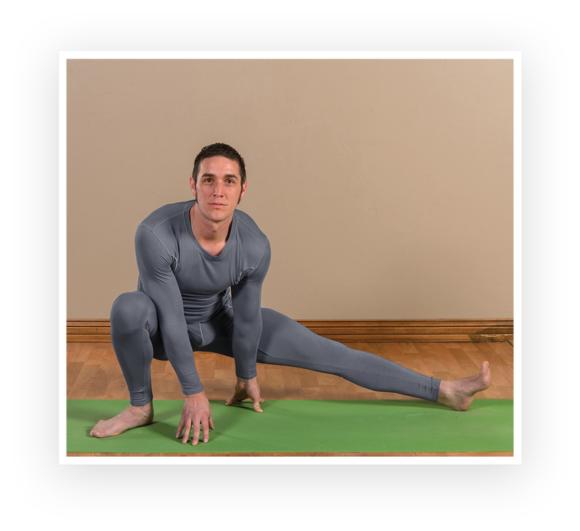Soccer: Bring Balance to the Workout
This is an excerpt from Yoga for Athletes by Ryanne Cunningham.
The most common injuries that soccer players experience occur in the knees and ankles. Sprains and strains of the lower extremities are common in soccer and range in severity. Other common injuries that are less severe include groin pulls, thigh and calf strains, shin splints, Achilles tendinitis, and patellar tendinitis. Such injuries can be reduced by simply stretching the hamstrings, quadriceps, inner thighs, and calves. In addition, soccer players need balance work to make sure their ankles are strong and to improve split-second decisions and movements on the field. Soccer players also get tight in the upper torso from using their arms to build momentum while running and jumping quickly. Yoga bolsters endurance and improves joint strength through a low-impact routine. The poses in this chapter address all of these issues. Hold each pose for 5 to 10 breaths and switch sides.
Half Squat Pose

Soccer players need to be fast and make split-second movements on the field. Half squat pose keeps players loose in the inner thighs for speed and quick, explosive movements needed on the field. Stand at the top of your mat. Step your left foot back, and turn your right foot to the left so that you are standing with your legs wide. Turn your toes out slightly so that your feet are not parallel to each other. Fold forward, and place your hands on the mat. Bend your right knee, then walk your hands to your right foot as your left leg straightens and your left toes point up to the ceiling (figure 12.1). Keeping your right heel on the mat, sink your hips and lift your chest. Switch legs.
King Pigeon Pose

Soccer involves a lot of quick bursts; lateral, backward, and forward running; and fast, quick stops. All these moves require strong quadriceps muscles to keep movement fluid and fast. From downward-facing dog pose, bend your right knee to your chest, then place your right knee behind your right wrist. Lower your left knee to the floor. Walk your right foot up toward your left hand and lengthen your left leg back, shifting your hips back and down toward the mat. Bend your left knee, and reach back with your left hand for your left foot. Square your hips and shoulders with the front of your mat as you gently pull your left foot toward your left hip (figure 12.2). Switch legs.
Learn more about Yoga for Athletes.
More Excerpts From Yoga for AthletesSHOP

Get the latest insights with regular newsletters, plus periodic product information and special insider offers.
JOIN NOW
Latest Posts
- Big problem verses small problem activity
- Combining creativity with a structured framework to create fun and effective games
- Designing games to allow all students to experience success
- Examples of TR sensory stimulation activities
- Therapeutic recreation tools of the trade
- The four steps in the therapeutic recreation process


